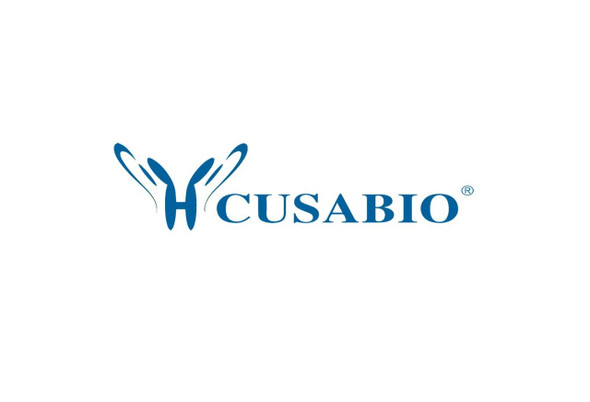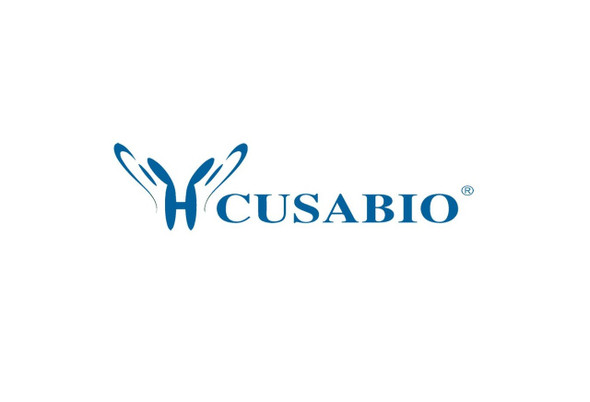Cusabio Human Recombinants
Recombinant Human F-box/LRR-repeat protein 2 (FBXL2) | CSB-EP892134HU
- SKU:
- CSB-EP892134HU
- Availability:
- 3 - 7 Working Days
Description
Recombinant Human F-box/LRR-repeat protein 2 (FBXL2) | CSB-EP892134HU | Cusabio
Alternative Name(s): F-box and leucine-rich repeat protein 2Imported F-box protein FBL2/FBL3
Gene Names: FBXL2
Research Areas: Cell Biology
Organism: Homo sapiens (Human)
AA Sequence: MVFSNNDEGLINKKLPKELLLRIFSFLDIVTLCRCAQISKAWNILALDGSNWQRIDLFNFQTDVEGRVVENISKRCGGFLRKLSLRGCIGVGDSSLKTFAQNCRNIEHLNLNGCTKITDSTCYSLSRFCSKLKHLDLTSCVSITNSSLKGISEGCRNLEYLNLSWCDQITKDGIEALVRGCRGLKALLLRGCTQLEDEALKHIQNYCHELVSLNLQSCSRITDEGVVQICRGCHRLQALCLSGCSNLTDASLTALGLNCPRLQILEAARCSHLTDAGFTLLARNCHELEKMDLEECILITDSTLIQLSIHCPKLQALSLSHCELITDDGILHLSNSTCGHERLRVLELDNCLLITDVALEHLENCRGLERLELYDCQQVTRAGIKRMRAQLPHVKVHAYFAPVTPPTAVAGSGQRLCRCCVIL
Source: E.coli
Tag Info: N-terminal 6xHis-SUMO-tagged
Expression Region: 1-423aa
Sequence Info: Full Length
MW: 63.1 kDa
Purity: Greater than 90% as determined by SDS-PAGE.
Relevance: Calcium-activated substrate recognition component of the SCF (SKP1-cullin-F-box protein) E3 ubiquitin-protein ligase complex, SCF(FBXL2), which mediates the ubiquitination and subsequent proteasomal degradation of target proteins. Unlike many F-box proteins, FBXL2 does not seem to target phosphodegron within its substrates but rather calmodulin-binding motifs and is thereby antagonized by calmodulin. This is the case for the cyclins CCND2 and CCND3 which polyubiquitination and subsequent degradation are inhibited by calmodulin. Through CCND2 and CCND3 degradation induces cell-cycle arrest in G0 (PubMed:22020328, PubMed:22323446). SCF(FBXL2) also mediates PIK3R2 ubiquitination and proteasomal degradation thereby regulating phosphatidylinositol 3-kinase signaling and autophagy (PubMed:23604317). PCYT1A monoubiquitination by SCF(FBXL2) and subsequent degradation regulates synthesis of phosphatidylcholine, which is utilized for formation of membranes and of pulmonary surfactant (By similarity).
Reference: "The DNA sequence, annotation and analysis of human chromosome 3."Muzny D.M., Scherer S.E., Kaul R., Wang J., Yu J., Sudbrak R., Buhay C.J., Chen R., Cree A., Ding Y., Dugan-Rocha S., Gill R., Gunaratne P., Harris R.A., Hawes A.C., Hernandez J., Hodgson A.V., Hume J. Gibbs R.A.Nature 440:1194-1198(2006)
Storage: The shelf life is related to many factors, storage state, buffer ingredients, storage temperature and the stability of the protein itself. Generally, the shelf life of liquid form is 6 months at -20?/-80?. The shelf life of lyophilized form is 12 months at -20?/-80?.
Notes: Repeated freezing and thawing is not recommended. Store working aliquots at 4? for up to one week.
Function: Calcium-activated substrate recognition component of the SCF (SKP1-cullin-F-box protein) E3 ubiquitin-protein ligase complex, SCF(FBXL2), which mediates the ubiquitination and subsequent proteasomal degradation of target proteins. Unlike many F-box proteins, FBXL2 does not seem to target phosphodegron within its substrates but rather calmodulin-binding motifs and is thereby antagonized by calmodulin. This is the case for the cyclins CCND2 and CCND3 which polyubiquitination and subsequent degradation are inhibited by calmodulin. Through CCND2 and CCND3 degradation induces cell-cycle arrest in G(0)
Involvement in disease:
Subcellular Location: Membrane, Lipid-anchor
Protein Families:
Tissue Specificity: Expressed in brain, heart, kidney, liver, lung, pancreas and placenta.
Paythway:
Form: Liquid or Lyophilized powder
Buffer: If the delivery form is liquid, the default storage buffer is Tris/PBS-based buffer, 5%-50% glycerol. If the delivery form is lyophilized powder, the buffer before lyophilization is Tris/PBS-based buffer, 6% Trehalose, pH 8.0.
Reconstitution: We recommend that this vial be briefly centrifuged prior to opening to bring the contents to the bottom. Please reconstitute protein in deionized sterile water to a concentration of 0.1-1.0 mg/mL.We recommend to add 5-50% of glycerol (final concentration) and aliquot for long-term storage at -20?/-80?. Our default final concentration of glycerol is 50%. Customers could use it as reference.
Uniprot ID: Q9UKC9
HGNC Database Link: HGNC
UniGene Database Link: UniGene
KEGG Database Link: KEGG
STRING Database Link: STRING
OMIM Database Link: OMIM









